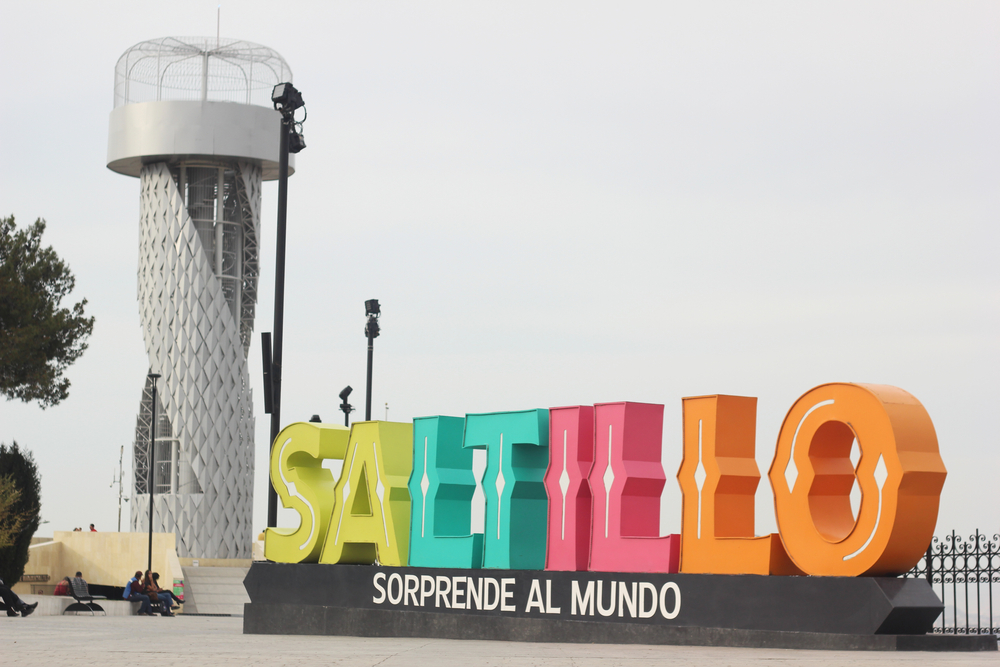While the appeal of doing business in Mexico is very clear, determining the right location to manufacture in Mexico can take time and effort. Foreign direct investors must weigh supply chain proximity, demographic stability, wages, and local infrastructure before making a site decision. Many manufacturers find Saltillo—the largest city and capital of the state of Coahuila—offers distinct advantages in each of these areas.
Saltillo has experienced rapid economic growth in recent years, making the city a leading international export hub in Mexico. In fact, 2023 data from real estate company CBRE identified Saltillo as a leading choice for nearshoring investors. The city’s real estate and labor have proven able to keep up with the strong demand for manufacturing sites in Mexico.
So, what makes Saltillo one of the best manufacturing locations in Mexico? Below, we offer seven advantages that might prompt companies to manufacture in Saltillo.
1. Strategic location
The capital of the state of Coahuila offers manufacturers a number of logistical advantages. While it sits below the higher costs and wages of the northern border zone, it is still an easy four-hour drive to the border crossing near McAllen, Texas. The central city is easily connected to the border via Highway 57, which flows south through San Luis Potosí and Mexico City. Saltillo is only an hour away from the manufacturing hub of Monterrey. This gives companies operating in Saltillo easy access to supply chain partners while leveraging lower real estate and labor costs.
Moreover, Saltillo’s location within the Zapaliname mountains makes the city cooler than other areas of Mexico, including Monterrey. In addition to offering a comfortable climate, it also can mean lower operational costs through reduced demands on air conditioning and heating.
Saltillo’s central location also means manufacturers have multiple options regarding getting goods to market. Aside from road transportation, options include the nearby Port of Tampico, rail, and through the regional airport Plan de Guadalupe Saltillo or Monterrey International Airport.
2. Stable demographics
Saltillo, a vibrant city with a metro area population of 1,034,000 in 2023, has been witnessing a steady demographic evolution. From a modest population of 70,008 in 1950, the city has grown remarkably over the decades, showcasing a 1.63% annual increase in population in the recent year alone.
The age distribution further exemplifies the demographic stability and youthful vigor of Saltillo. As of the 2020 census, a significant portion of the population falls under the age of 30:
- 0-9 years: 156,548 individuals,
- 10-19 years: 147,843 individuals and
- 20-29 years: 150,238 individuals.
This demographic profile, constituting over 454,000 young individuals, embodies a promising prospect for companies aiming to future-proof their workforce. The sizable young population is a testament to the long-term stability and potential for future hiring that Saltillo offers to manufacturers.
3. Competitive wages
Manufacturers in Saltillo have access to resources and supply chain partners in nearby Monterrey at a fraction of the price. Labor, in particular, tends to cost 15-25% less in Saltillo than in Monterrey, making it a cost-effective location for manufacturing operations. The average daily wage for an unskilled manufacturing worker in Saltillo is 329 pesos a day, which translates to 3.91 USD per hour fully fringed using a 20 to 1 exchange rate. On the other hand, a welder in Saltillo earns about 460 pesos per day or 5.22 USD per hour fully fringed using the same exchange rate. This wage structure not only allows for competitive production costs but also contributes to the appeal of Saltillo as a favorable manufacturing hub with a sustainable labor force.
4. Workforce training investments
Saltillo is recognized for having one of Mexico's highest productivity rates, a testament to the exceptional workforce training cultivated in the region to address manufacturers' workforce needs.
A notable portion of this training initiative has been driven by the state government's effort to bridge the gap between educational institutions and the private sector. This liaison not only facilitates job placements for graduates but also fosters a conducive environment for manufacturing investments. A sterling example of this endeavor is the establishment of Universidad Tecnologica de Coahuila in 1995 by the Mexican government, aimed at supporting U.S.-based automakers.
Further enhancing the workforce training landscape are the public-private partnerships that have emerged over time. A notable instance is the collaboration at Tetakawi's Zapa Manufacturing Community, which houses a CONALEP training center on-site. This partnership epitomizes the concerted efforts to upskill the local workforce to meet the evolving needs of the manufacturing sector.
Saltillo also prides itself on hosting 23 technical centers and 17 higher education institutions dedicated to nurturing skilled personnel for the manufacturing industry, such as machinists and engineers, ensuring a steady pipeline of competent professionals ready to propel the industry forward.
5. Supply chain partners
Automotive manufacturing constitutes a significant portion of Saltillo’s manufacturing output. The city is a proud host to Original Equipment Manufacturers (OEMs) such as General Motors and Daimler Chrysler, alongside a multitude of Tier 1 and Tier 2 automotive component suppliers. Saltillo's long-standing history in automotive manufacturing has not only refined the supply chains but also enhanced the workforce skillsets, which now serve as a valuable asset to other burgeoning sectors in the region including electronics, plastics, and aerospace manufacturing industries.
Often referred to as the "Detroit of Mexico," Saltillo has carved a niche for itself in the automotive sector. The city's thriving automotive industry stands as a testament to its self-sustaining manufacturing ecosystem.
Its geographical proximity to Monterrey, which houses a Kia assembly plant and will soon host a Tesla Gigafactory, offers Saltillo-based manufacturers an opportunity to tap into an extended network of supply chain contributors if needed.
Furthermore, the broader Coahuila region is rich in natural resources, significantly contributing to the raw material needs of the manufacturing sector. Coahuila harbors the majority of Mexico’s coal reserves, alongside mines for iron, titanium, feldspar, lead, and dolomite. The rich natural resources, coupled with a well-entrenched automotive sector, fortify Saltillo’s position as a self-reliant and appealing destination for global manufacturers.
6. Competitive business climate
The attractiveness of a region for investors often correlates with its level of competitiveness. This is aptly reflected in the rankings provided by the Mexican Institute for Competitiveness (IMCO). In its 2022 urban competitiveness ranking, IMCO honored Monterrey with the top spot, with Saltillo closely following, asserting itself as a formidable locale for business operations.IMCO's evaluation hinges on several pivotal factors that underline a city's appeal, encompassing safety, connectivity, and innovation. The assessment delves into the availability of educational opportunities, the presence of research centers, and the volume of patents filed, among other critical indicators.
For manufacturers aiming to immerse themselves in a conducive business atmosphere without compromising on cost-effectiveness, Saltillo emerges as a prime choice. The city not only mirrors the competitive essence observed in Monterrey but does so with a favorable cost structure. This competitive business climate, coupled with Saltillo's strong manufacturing backbone, continually draws in investors, ensuring a thriving and progressive industrial community.
7. Incentives and support
There are lots of advantages to manufacturing in Saltillo, but additional incentives may be available from the local government. CBRE's Location Incentives Group reports that incentives offered in Saltillo include grants and tax abatements. Saltillo Mayor Jose María Fraustro Siller has noted that public policies further make it attractive to operate in the city.
Companies manufacturing in Saltillo also have access to all of the benefits of the IMMEX program, which are more readily accessible for companies that choose to enter Mexico under the umbrella of a shelter service provider. Shelter companies like Tetakawi also provide administrative support, such as startup services and HR administration, that can shorten the learning curve and speed launch.
Find more advantages to manufacturing in Saltillo
While there are many excellent sites throughout Mexico, Saltillo should be at the top of the list for consideration for manufacturers in every industry. Manufacturers have flocked to Saltillo for years, and this trend shows no signs of slowing down. The city’s numerous advantages in infrastructure, demographics, education, technical expertise, and competitiveness make it an excellent location for manufacturers.
Tetakawi can turn your Mexico manufacturing plans into reality. When you partner with our experienced team, you get everything you need to navigate Mexico’s complex industrial economy, from top to bottom. Contact Tetakawi today to explore your options.
Subscribe
Sign up and stay informed with tips, updates, and best practices for manufacturing in Mexico.






